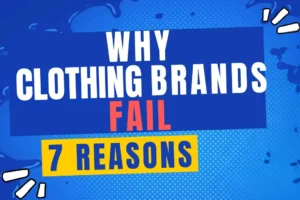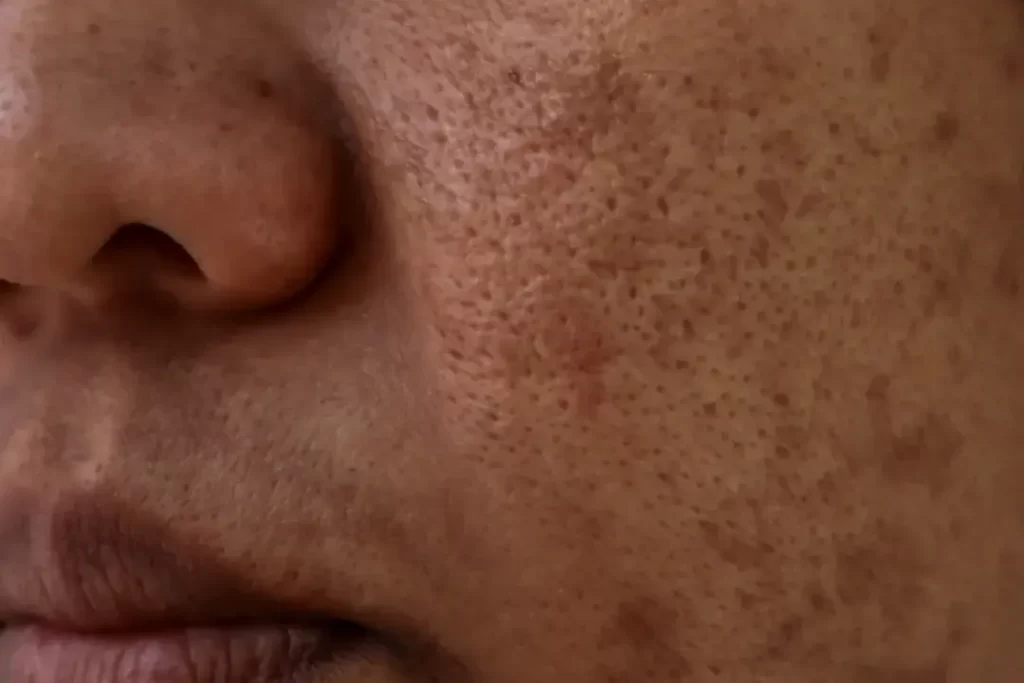
Why Clothing Brands Fail
Top Different Types of Shirts for Women and Men Top Different Types of Shirts for
The Ultimate Guide on what is vegan leather for Sustainable Brands
As conscious consumers and environmentally responsible businesses, we are all looking for ways to reduce our impact on the planet while still maintaining our style and comfort. One of the ways to achieve this is by choosing vegan leather fabric over traditional leather. Vegan leather is a synthetic material that imitates the look and feel of animal leather without using any animal products. In this blog, we will discuss what vegan leather fabric is, its brief history, and why it’s important for B2B businesses/brands to consider using it.
To define vegan leather, is a synthetic material that imitates the look and feel of animal leather without using any animal products. It is also called faux leather or synthetic leather. Vegan leather can be made from a variety of materials such as polyurethane (PU), polyvinyl chloride (PVC), recycled plastic, and other sustainable materials like pineapple leaves, cork, and apple skins. It is durable, easy to maintain, and can be made in a variety of colors and textures, making it an excellent alternative to animal leather.You can also checkout leather handbag manufacturer click here.

The use of synthetic leather dates back to the early 1900s when scientists developed a material called Naugahyde, which was used for upholstery and clothing. In the 1960s, synthetic leather became more popular in the fashion industry, but it was not until the late 20th century that the demand for vegan leather started to grow. Today, vegan leather is used in various industries, including fashion, automotive, and furniture, as a sustainable and ethical alternative to animal leather.
The fashion and textile industry is known for its significant impact on the environment and animal welfare. Animal leather production involves the use of hazardous chemicals, deforestation, and greenhouse gas emissions. Vegan leather, on the other hand, can be made from recycled materials and sustainable sources, making it a more eco-friendly option. B2B businesses/brands that adopt vegan leather in their products can appeal to conscious consumers who prioritize sustainability and ethical production practices. Additionally, vegan leather is often more affordable than animal leather, which can reduce production costs and increase profit margins.
Leather has been a popular material for centuries due to its durability, texture, and aesthetic appeal. However, traditional leather has many ethical and environmental issues associated with it. In recent years, vegan leather has emerged as a sustainable and ethical alternative to traditional leather. In this section, we will discuss leather vs vegan leather.
The primary difference between vegan leather and traditional leather is the materials used to make them. Traditional leather is made from animal skin, while vegan leather is made from synthetic or plant-based materials. Traditional leather production involves the use of toxic chemicals and the intensive use of water, while the production of vegan leather is less harmful to the environment.
Leather is known for its durability and longevity. However, the durability of traditional leather depends on various factors such as the quality of the hide, the tanning process used, and how it is cared for. On the other hand, vegan leather is generally more durable than traditional leather. It can withstand wear and tear and is resistant to scratches and stains.
Traditional leather has a unique texture and appearance that is difficult to replicate with vegan leather. However, advancements in technology have made it possible to create vegan leather that looks and feels like real leather. Vegan leather can also be made to mimic other textures and patterns that are not possible with traditional leather.
Traditional leather is a luxury material that is often expensive. The cost of leather depends on various factors such as the quality of the hide, the tanning process used, and the demand for the product. Vegan leather, on the other hand, is generally more affordable than traditional leather.
Vegan leather and faux leather are often used interchangeably, but they are not the same thing. While vegan leather is a type of faux leather, not all faux leather is vegan. Faux leather can be made from a variety of materials including polyurethane (PU), polyvinyl chloride (PVC), and recycled plastic. Vegan leather, on the other hand, is a synthetic material made from plant-based materials like pineapple leaves, apple peels, and cork. One of the key differences between vegan leather and faux leather is the environmental impact. Faux leather is often made from non-renewable resources and can release harmful chemicals during production. Vegan leather, on the other hand, is made from sustainable and eco-friendly materials.
Another difference is the vegan leather quality and durability. Vegan leather is often considered to be higher quality than faux leather, as it is more breathable and has a softer feel. It is also more durable and can withstand wear and tear over time.
When it comes to vegan leather fabric, there are several types available in the market. These materials are made from different sources and have varying properties and features that make them suitable for different applications. In this article, we’ll explore the most popular types of vegan leather fabric and what makes each of them unique.
Polyurethane is one of the most commonly used materials to produce vegan leather. It is a synthetic material made from petroleum-based thermoplastic polymer. PU leather vegan is known for its durability, flexibility, and affordability. It can be produced in a range of colors and textures, making it a versatile option for fashion accessories and upholstery.
PVC was once commonly used to produce vegan leather but has fallen out of favor due to its negative environmental impact. PVC is a type of plastic that releases harmful chemicals during production and disposal. However, some manufacturers still use PVC to produce vegan leather due to its low cost and ability to mimic the texture of real leather.
Microfiber vegan leather is a synthetic material made from ultra-fine polyester fibers. It is often used as a sustainable alternative to animal suede leather. Microfiber vegan leather is lightweight, breathable, and resistant to water and stains. It’s commonly used in footwear, handbags, and apparel.
Pinatex is a relatively new material made from pineapple leaves. The leaves are processed into fiber, which is then treated to create a leather-like texture. Pinatex vegan leather is eco-friendly, biodegradable, and cruelty-free. It’s often used for high-end fashion and accessories due to its unique texture and sustainability.
Cork vegan leather is made from the bark of cork oak trees. The bark is harvested without harming the tree, making it a sustainable and eco-friendly material. Cork vegan leather is lightweight, durable, and water-resistant. It’s commonly used for accessories such as wallets and bags.
Apple leather, also known as Fruit Leather, is made from apple peels and cores that are discarded during the juice-making process. The peels and cores are cleaned, ground, and transformed into a pulp that can be molded into various shapes. This innovative material is eco-friendly, biodegradable, and cruelty-free.
Mushroom leather is a biofabricated material made from mushroom mycelium. Mycelium is the vegetative part of a fungus that grows underground. It’s processed and treated to create a leather-like texture that is eco-friendly, biodegradable, and sustainable. Mushroom leather is still in the early stages of development but has the potential to revolutionize the fashion industry.
Vegan leather is made using a variety of sustainable materials and manufacturing processes. In this section, we will explore the different methods used to create vegan leather and compare their environmental impact.
One of the most common methods used to create vegan leather is through the use of polyurethane (PU). PU leather is made by coating a fabric backing with a layer of polyurethane. This process creates a material that is durable, waterproof, and resistant to stains.
To make PU leather, the following steps are typically taken:
While PU vegan leather is a popular choice, it is not the most eco-friendly option due to the use of chemicals and the potential for pollution during the manufacturing process.
Another method used to create vegan leather is through the use of polyvinyl chloride (PVC). PVC vegan leather is made by coating a fabric backing with a layer of PVC. This process creates a material that is durable, waterproof, and easy to clean.
To make PVC leather, the following steps are typically taken:
While PVC vegan leather is also a popular choice, it is not the most eco-friendly option due to the use of chemicals and the potential for pollution during the manufacturing process.
Plant-based vegan leather is made using a variety of natural and sustainable materials, including pineapple leaves, cork, and mushrooms. This method is more eco-friendly than PU or PVC vegan leather as it relies on natural materials that have a lower environmental impact.
While plant-based vegan leather is a more sustainable option, it can be more expensive and less durable than traditional PU or PVC vegan leather.
Vegan leather has become an increasingly popular choice for businesses and individuals looking for a sustainable and ethical alternative to traditional leather. In this section, we will explore the unique features and benefits of vegan leather fabric.
One of the key features of vegan leather is its durability and longevity. When compared to traditional leather, vegan leather is often just as durable and can last just as long. This is especially true for high-quality vegan leather made from sustainable materials and produced using environmentally-friendly methods.
Vegan leather is resistant to wear and tear, making it ideal for use in a variety of applications, including clothing, shoes, and accessories. This means that businesses can offer their customers products that are not only stylish but also long-lasting and sustainable.
Vegan leather is highly versatile and can be used in a wide range of applications. It can be designed to look and feel like traditional leather, or it can be produced in a variety of unique textures, colors, and patterns.
This versatility allows designers and manufacturers to create a wide range of products, from clothing and accessories to furniture and car interiors. The ability to customize the look and feel of vegan leather means that businesses can offer products that are not only sustainable but also highly desirable and on-trend.
One of the most significant features of vegan leather is its environmental benefits. Unlike traditional leather, which is produced from animal hides, vegan leather is made using sustainable and ethical materials, such as plant-based alternatives or recycled materials.
Vegan leather production also has a lower environmental impact than traditional leather production. For example, the use of chemicals and water during the tanning process for traditional leather can be harmful to the environment. In contrast, many vegan leather production methods use fewer chemicals and less water, making them more eco-friendly.
In recent years, there has been a growing demand for sustainable and ethical products. Consumers are increasingly aware of the environmental impact of their purchasing decisions, and they are looking for businesses that share their values. In this section, we will explore the advantages of using vegan leather fabric for B2B businesses/brands.
One of the biggest advantages of using vegan leather is that it helps businesses to meet consumer demand for sustainable and ethical products. By using vegan leather, businesses can offer their customers a product that is both fashionable and sustainable. This is especially important for businesses that target younger and environmentally-conscious consumers who are looking for eco-friendly alternatives to traditional leather.

Using vegan leather can also help businesses to improve their brand perception and social responsibility. As more and more consumers become aware of the environmental impact of their purchasing decisions, they are looking for businesses that share their values. By using vegan leather, businesses can position themselves as leaders in sustainability and social responsibility, which can help to attract and retain customers.

Another advantage of using vegan leather is its cost-effectiveness compared to traditional leather. Traditional leather is often expensive, and the production process can be complex and costly. In contrast, many vegan leather production methods are simpler and more cost-effective. This means that businesses can offer high-quality and sustainable products at a lower cost, which can help to improve their bottom line.

The production of animal-based leather has a significant environmental impact. Leather production requires large amounts of water and energy, and also generates significant amounts of waste, including hazardous chemicals and wastewater. Additionally, raising livestock for leather production contributes to deforestation, greenhouse gas emissions, and other environmental problems.

Traditional leather production is also associated with significant labor concerns. Leather tanneries in developing countries are often associated with poor working conditions, low wages, and exposure to hazardous chemicals. Workers in these facilities are at risk of developing health problems such as respiratory issues, skin conditions, and even cancer.

Using vegan leather can help reduce harm to animals and the environment. Vegan leather is produced using sustainable and environmentally friendly materials, such as plant-based or recycled fibers. Because vegan leather does not require the use of animal hides, it eliminates the need for raising livestock and the associated environmental impacts. Additionally, vegan leather production can also help reduce labor concerns in the fashion industry, as it does not require the use of hazardous chemicals or expose workers to harmful working conditions.

The fashion industry has widely adopted vegan leather as an alternative to traditional leather. Vegan leather is commonly used to make jackets, coats, pants, skirts, and other clothing items. The material offers a sustainable and ethical option for consumers who wish to reduce their environmental impact without compromising on style.
Shoe and boot manufacturers commonly use vegan leather as a material due to its durability and longevity. It provides an excellent substitute for traditional leather, and its unique designs and textures offer versatility to footwear makers.
The production of bags, belts, and wallets using vegan leather has become increasingly popular. The material provides high-quality and eco-friendly options for consumers who are conscious of their environmental impact.
Vegan leather has also found a significant place in the furniture and home decor industry. It can be used to create stylish and long-lasting sofas, chairs, ottomans, and other furniture items. Compared to traditional leather, vegan leather is a more sustainable option as it requires fewer resources and energy to produce.
Vegan leather is commonly used in the production of automotive interiors. It offers a durable and easy-to-clean material for car seats, dashboards, and other car interior parts. Furthermore, it is a more sustainable option compared to traditional leather, which contributes to negative environmental impacts associated with its production.
Texture: High-quality vegan leather should have a consistent texture that resembles the texture of traditional leather. The texture should not be too smooth or too rough, and it should not have any visible defects.
Durability: A good quality vegan leather should be durable and able to withstand wear and tear. It should be able to maintain its shape and color even after repeated use.
Breathability: Vegan leather should be breathable and comfortable to wear. It should not cause discomfort or sweating, and it should allow air to circulate.
Flexibility: High-quality vegan leather should be flexible and able to adapt to the wearer’s movements. It should not crack or peel when bent or folded.
Water Resistance: Vegan leather should be water-resistant and able to repel water. This makes it easier to clean and maintain.
Look for suppliers who have a strict quality assurance process to ensure that their products meet high standards. Check if they have certifications for their materials such as OEKO-TEX or GOTS.

Do some thorough research and read reviews of the supplier. Look for feedback from other businesses or individuals who have purchased from them before.

Choose a supplier that prioritizes sustainable and ethical practices. This includes using environmentally friendly materials and processes, as well as fair labor practices.

A good supplier should be able to offer different customization and personalization options such as different colors, textures, and finishes.

Vegan leather is a popular and sustainable alternative to traditional leather, but you still need to know how to care for vegan leather and maintain it to keep it looking its best. Here are some tips to help you maintain your vegan leather items. Learn more about vengan leather.
First, remove any excess dirt or debris from the surface of the vegan leather with a soft-bristled brush or a dry cloth.
Vegan leather may fade over time due to exposure to sunlight and heat. To prevent fading, keep your vegan leather items away from direct sunlight and heat sources.
Vegan leather may crack or peel if it becomes too dry. To prevent cracking, moisturize your vegan leather items with a leather conditioner or a non-drying oil.
Vegan leather may stain if it comes into contact with liquids or oils. To prevent staining, avoid exposing your vegan leather items to liquids or oils, and clean up any spills immediately.
By following these care and maintenance tips, you can extend the lifespan of your vegan leather items and keep them looking great for years to come.
In conclusion, vegan leather fabric is a sustainable and ethical alternative to traditional leather that offers a range of benefits for B2B businesses and brands. It provides a durable, versatile, and cost-effective material that can be used in a variety of applications, from fashion and apparel to automotive interiors. When choosing high-quality vegan leather, look for characteristics such as durability, texture, and eco-friendliness. Proper maintenance and care, including regular cleaning and proper storage, can help prolong the lifespan of vegan leather products. By using vegan leather, B2B businesses and brands can meet consumer demand for sustainable and ethical products, increase brand perception and social responsibility, and reduce harm to animals and the environment.
It depends on the type of material used for making vegan leather. Some vegan leathers like polyurethane (PU) and polyvinyl chloride (PVC) can stretch a little bit, while others like cork leather or mushroom leather do not stretch.
Most vegan leathers are not completely waterproof, but they can resist water to some extent. Some types of vegan leather like PVC or PU may be more water-resistant than others. It’s recommended to avoid getting vegan leather wet to maintain its longevity.
Most vegan leathers are not completely waterproof, but some may be more water-resistant than others. It’s recommended to avoid getting vegan leather wet to maintain its longevity.
Vegan leather is a type of material made to mimic the look and feel of real leather, while vinyl is a synthetic material made from PVC. Vegan leather is typically more durable and of higher quality than vinyl.
The lifespan of vegan leather depends on various factors, including the quality of the material, how it’s used, and how well it’s maintained. Generally, high-quality vegan leather can last for several years, even up to a decade, with proper care.
Polyurethane (PU) can be vegan, depending on how it’s produced. PU can be made from either petroleum-based or bio-based materials. When it’s made from bio-based materials like corn or soy, it can be considered vegan.
The longevity of vegan leather depends on various factors, including the quality of the material, how it’s used, and how well it’s maintained. Generally, high-quality vegan leather can last for several years, even up to a decade, with proper care.
Saffiano vegan leather is a type of textured vegan leather that’s made by cross-hatching the surface of the material with a wax coating. It’s known for its durability, resistance to scratches and water, and high-end appearance.
No, vegan leather is not genuine leather. Genuine leather is made from animal hides, while vegan leather is made from synthetic or plant-based materials.
The longevity of vegan leather depends on various factors, including the quality of the material, how it’s used, and how well it’s maintained. Generally, high-quality vegan leather made from materials like polyurethane, cork, or Piñatex can last for several years, even up to a decade, with proper care.
No, vegan leather is not genuine leather. Genuine leather is made from animal hides, while vegan leather is made from synthetic materials or plant-based materials such as pineapple leaves, cork, or mushrooms.
PU leather is not considered vegan as it is made from a plastic material that is treated with various chemicals. Unlike vegan leather, which is made from natural and sustainable materials, PU leather is a synthetic material that is not biodegradable and can have negative impacts on the environment.
Expert Custom Clothing Manufcaturer

Top Different Types of Shirts for Women and Men Top Different Types of Shirts for

What You Must Know About Clothing Samples? Before You Produce a Single Garment: What You

How Much Does It Cost To Make a Hoodie A Complete Cost Breakdown for Custom

Discover the Types of Buttons Discover the Types of Buttons That Transform Style and Functionality
Most Recent Posts
Expert Custom Clothing Manufcaturer
Join our Mailing list!
Get all latest news, exclusive deals and updates.